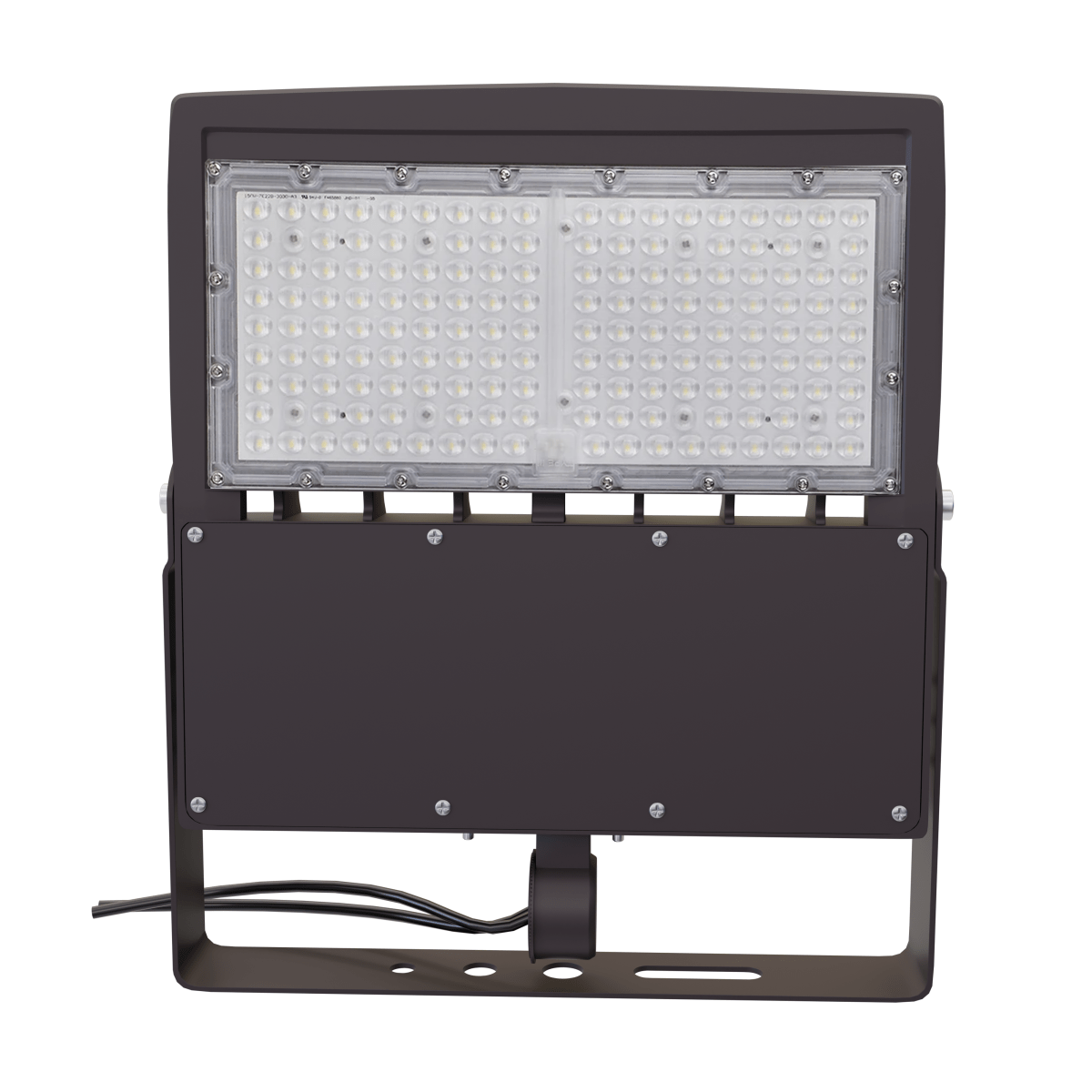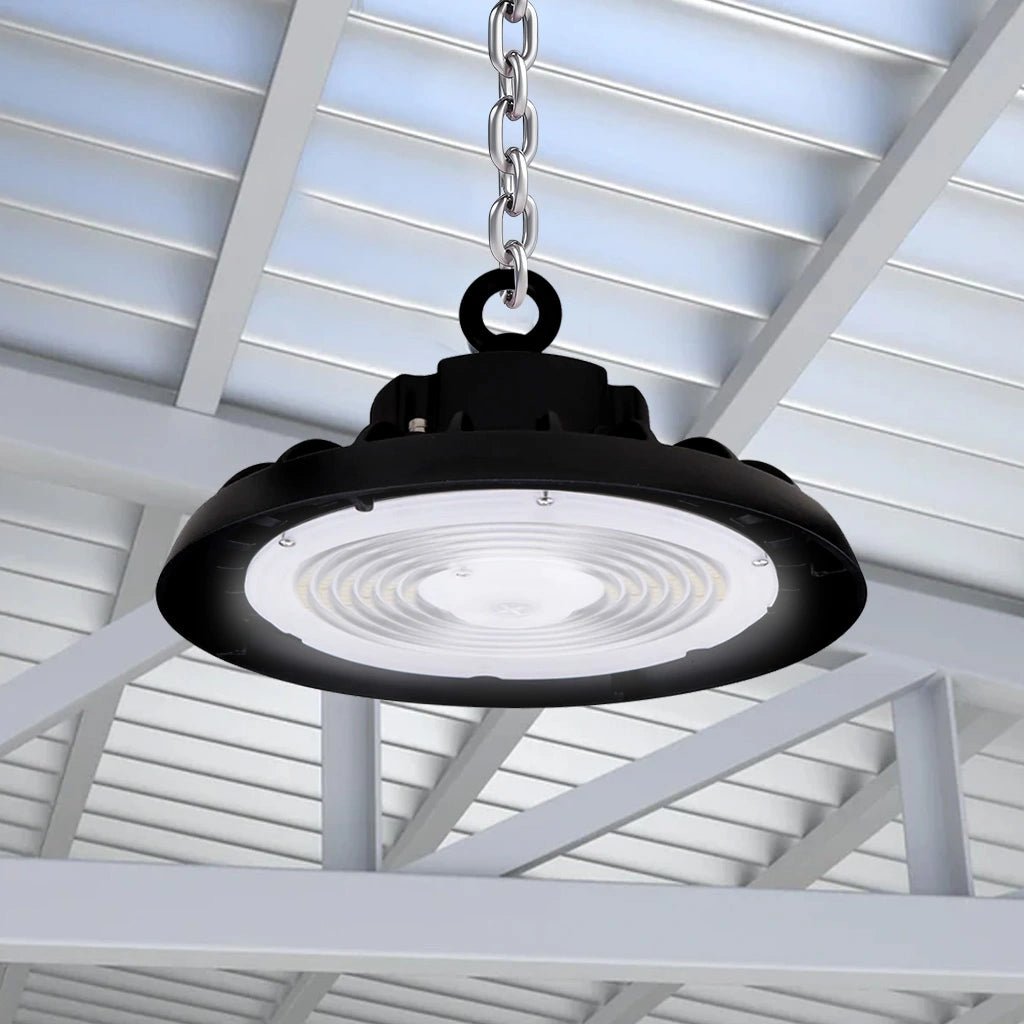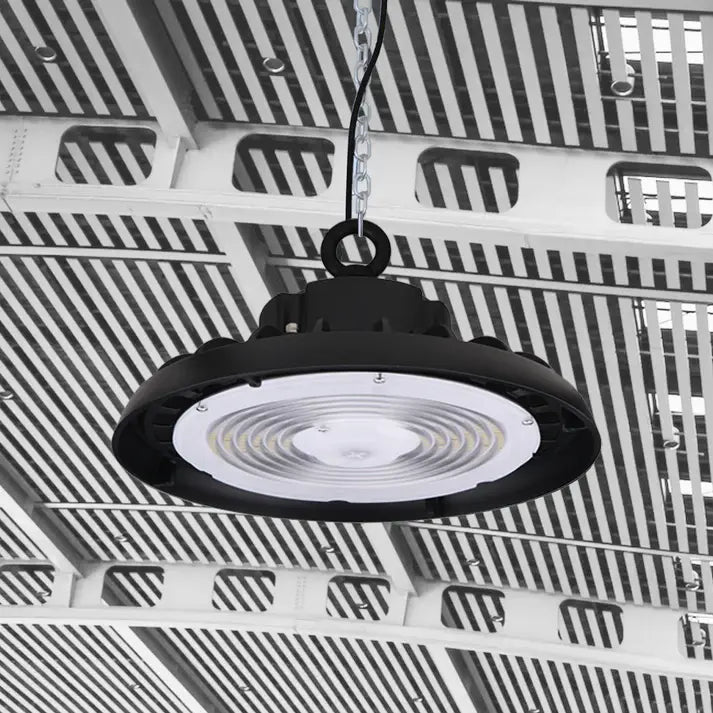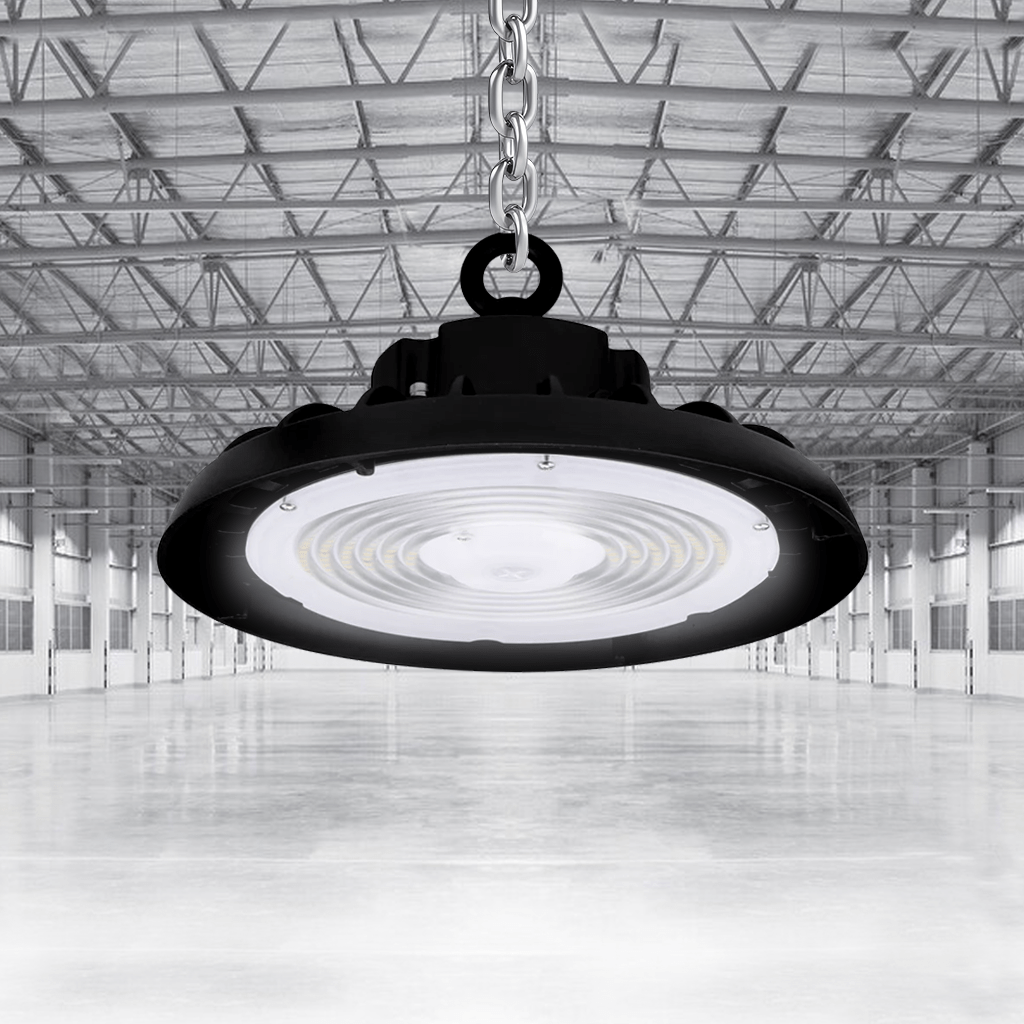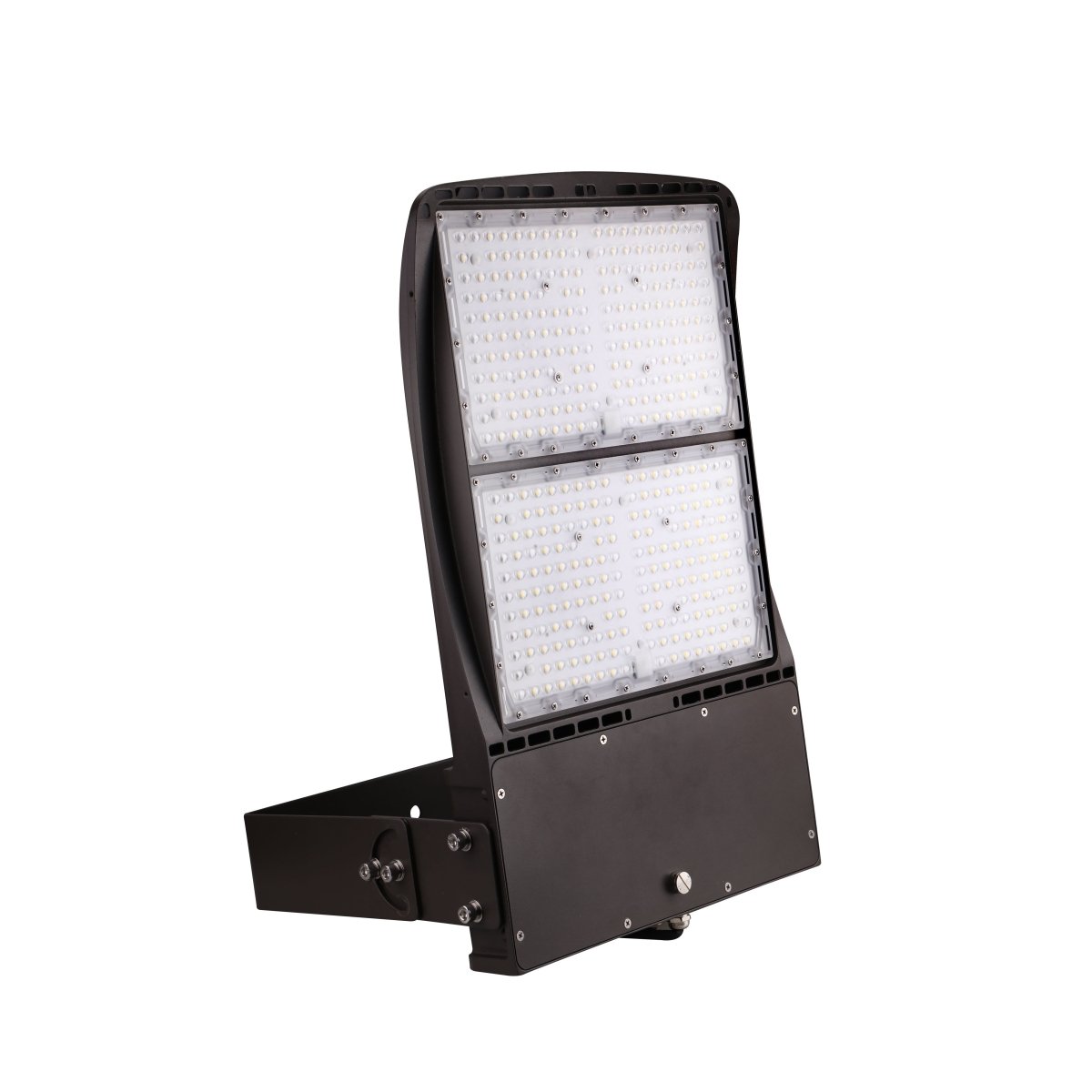Floodlights and high bay lights are distinct types of lighting fixtures, each designed to serve specific purposes. Here’s an overview of their key differences:
Purpose:
-
Floodlights: Floodlights are designed to provide broad and intense illumination over a wide area. They are commonly used for outdoor lighting applications, such as illuminating sports fields, parking lots, and building facades. Floodlights are meant to cover a large horizontal area with uniform light.
-
High Bay Lights: High bay lights are specifically designed for indoor spaces with high ceilings, typically 20 feet (6 meters) or higher. They are commonly used in settings like warehouses, factories, gyms, and large retail stores to provide concentrated and high-intensity lighting from a considerable height.
Light Distribution:
-
Floodlights: Floodlights have a wide beam angle that spreads light evenly across a horizontal plane. They are designed to minimize shadows and provide uniform illumination over a broad area.
-
High Bay Lights: High bay lights have a narrower beam angle and are designed to focus light downwards. This concentrated beam is ideal for providing adequate illumination at long distances in indoor settings with tall ceilings.
Mounting Height:
-
Floodlights: Typically, floodlights are mounted at lower heights, such as on poles or walls, to cover outdoor areas effectively.
-
High Bay Lights: As the name suggests, high bay lights are mounted at significant heights, usually attached to the ceiling or suspended from it. They are designed to provide adequate illumination in spaces with high ceilings.
Lumen Output:
-
Floodlights: Floodlights may have lower lumen output compared to high bay lights, as their purpose is to evenly distribute light over a wide area.
-
High Bay Lights: High bay lights are characterized by their high lumen output, as they need to provide intense illumination over long distances in large indoor spaces.
Design and Construction:
-
Floodlights: Floodlights are often more robust and weather-resistant, as they are exposed to outdoor elements. They may have features like adjustable brackets for flexibility in directing light.
-
High Bay Lights: High bay lights are designed for indoor use, so they may have a more streamlined and aesthetic appearance. They are built to withstand conditions found indoors, such as temperature and humidity.
In summary, flood lights and high bay lights serve different lighting needs. Floodlights are used for wide outdoor coverage, while high bay lights are tailored for indoor spaces with high ceilings that require concentrated, intense illumination. The choice between them depends on the specific lighting requirements of your space or application.
FAQs
-
Are floodlights suitable for indoor use?
- Floodlights are primarily designed for outdoor use due to their wide beam angle and weather-resistant features. However, they can be used indoors if the application requires broad illumination.
-
Can high bay lights be dimmed to adjust lighting intensity?
- Yes, many high bay lights come with dimming capabilities, allowing you to adjust the lighting intensity based on your needs and energy-saving requirements.
-
What are the advantages of using LED technology in high bay lights?
- LED technology in high bay lights offers energy efficiency, longer lifespan, and better color rendering compared to traditional lighting sources like metal halide or fluorescent bulbs.
-
Do floodlights require frequent maintenance?
- Floodlights are designed for durability and often require minimal maintenance. However, it's essential to check and clean them periodically to ensure optimal performance.
-
Can high bay lights be used in retail stores and commercial spaces?
- Yes, high bay lights are suitable for retail stores and commercial spaces with high ceilings, providing focused and efficient lighting for product displays and work areas.
















































































